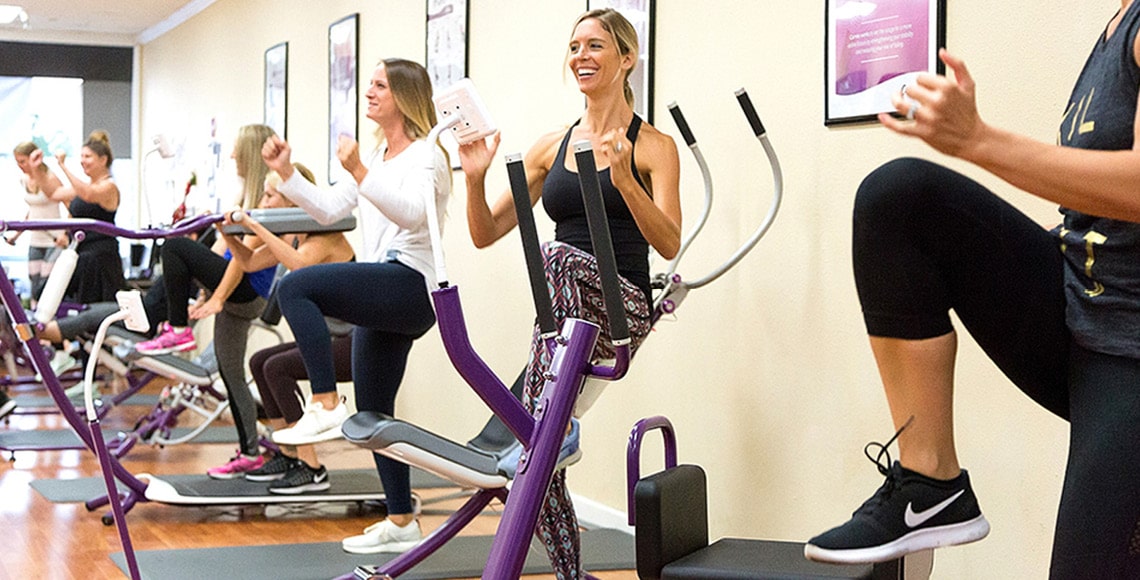Staying fit and healthy throughout our lives offers an enormous range of benefits.
From being able to play sports, participate in active hobbies, and do day-to-day activities with relative ease, these are just a few examples of how exercise can aid your fitness and wellbeing. However, your activities and how you train should be tailored so that we can optimise fitness, regardless of age.
We spoke to fitness expert, Joanna Dase from Curves, who outlines what the best workout is for your age is, and an easy plan to follow at every decade.
The 20’s workout:
In our 20’s, our bodies can handle greater workloads which means we can train at higher levels.
However, our 20’s is often a time we neglect our physical health and take it for granted. The sooner we start to build a base in fitness, the better prepared we are for later in life.
Wisely use your 20’s to invest in learning form, be aware of mobility and the range of motion.
In this decade, your body is likely to be in its peak physical condition, and your muscles will recover quickly from any workout.
Therefore your 20’s is the optimum time to focus on weight training and finding a form of cardio exercise that you enjoy and can consistently do throughout your life.
How to do it:
Aim for cardio at least 3-5 days a week, whether you prefer running, swimming, cycling, or walking.
Strength Train at least 3 days a week, challenging all those major muscle groups: back, chest, arms, core, shoulders, and legs.
Be sure to stretch it out daily, your older self will thank you.
The 30’s workout:
The bodies resilience typically continues into our 30’s. However, it is a time of our lives where we become consumed with responsibilities.
Relationship, families and work often make it harder to focus on our own personal wellbeing.
The key is to optimise the time you have available. Look for opportunities to move whenever possible, walk when you can and take the stairs instead of the lift.
Forming good habits in our 30’s will mean we can continue to do the things we enjoy later in life.
How to do it:
This is a particularly important time for women to focus on strength training to offset any potential future complications from osteoporosis or arthritis.
Keep up with your cardio and flexibility 3-4 times per week, with a personal coach who can help you with your changing body and goals.
The 40’s workout:
Typically, our 40’s is a time when our bodies need a little care and attention.
As our metabolism slows down and muscle density starts to decrease, it is important to focus on preserving muscle tone.
Staying injury free yet maintaining our range of motion is essential. In your 40’s, work on consistency within your workouts and take a holistic approach to staying fit.
How to do it:
Keep up your moderate-intensity cardio and aim for at least 3-4 days a week of strength training with it.
In your 40’s, it’s important to find a community of support! Join a local fitness club where it’s not just all about getting fitter, it’s all about increasing your energy and feeling fab in your 40’s.
The 50’s workout:
So, then we hit our 50’s! Avoid comparing how your body responds to exercises now, to how it used to.
Really listen to your body, paying extra attention to areas that are weak or causing problems.
This could be anything from tight spots, muscular imbalance, lack of flexibility or mobility.
The key is to maintain the right techniques, activity, strength training and flexibility. But really listen and respect your body.
How to do it:
Continue strength training, primarily for hips and core as this has been proven to visibly slow the aging process.
Keep up your cardio by daily walking- this is a great way to trim the midsection.
Now is the time to take your flexibility and balance programme seriously, with daily stretching and focused breathing every day for 10 minutes.
In total, aim for 30 minutes total workout a day.
The 60’s workout:
During your 60’s, you can still do the same exercises that you enjoyed before, but you may need to slightly modify the movement.
For example, you can still do a squat, but you may need to limit the range or the length of the hold.
As bone and muscle density decreases, it is critical to continue your focus on strength training but be sure to pay attention to balance and flexibility to stay safe and supple.
How to do it:
Keep it simple in the 60’s. Aim for a balanced moderate daily routine where you do what you love!
With any exercise, your main aims should be to prevent injury, increase mobility, and maintain quality of life with your movements.
